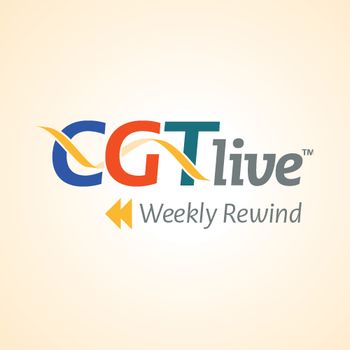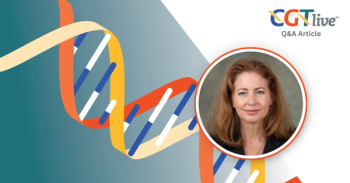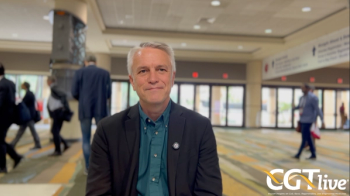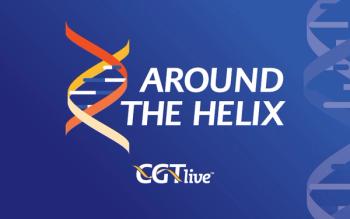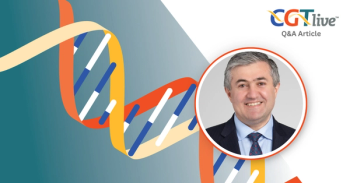
Etranacogene Dezaparvovec Shows Durable Activity and Reduced Consumption of Factor IX in Hemophilia B After 3 Years
The CSL Behring/uniQure gene therapy produced significant reductions in annualized bleeding rates and the number of total bleeds, with a consistent safety profile and no new adverse events.
Men with severe or moderately severe hemophilia B, with or without preexisting AAV5 neutralizing antibodies (NAbs), who were treated with single-dose administration of etranacogene dezaparvovec (EtranaDez; Hemgenix) in the phase 3, open-label, single-arm HOPE B trial (NCT03569891) have shown long-term improvements demonstrating treatment efficacy compared with standard of care factor IX prophylaxis past the 2-year mark, according to a new analysis.1
In these data, which included 52 patients with factor IX less than or equal to 2% who completed 36 months of follow-up, the mean annualized bleeding rate (ABR) for all bleeds from months 7 to 36 post treatment was reduced by 64% (mean ABR, 1.52) compared with the 6-or-more-month lead-in period (mean ABR, 4.17), which was statistically significant (P = .0004). Additionally, the total bleeds (including all types)—which numbered 136 during the lead-in period—decreased to 55 during year 1, then 48 during year 2, and finally to 37 during year 3.
The median bleeds per participant decreased and remained stable from 2.0 (range, 0-10) during the lead-in period to 0.0 (range, 0-4) in the first year, remaining at 0.0 (range, 0-10) and 0.0 (range, 0-8) in the second and third years, respectively. Of note, at the 3 years post-treatment time point, 51 patients (94%) remained free of continuous factor IX prophylaxis.
The uniQure and CSL Behring gene therapy product—which was the first approved for hemophilia B in the United States—is an adeno-associated virus serotype 5 (AAV5) vector containing a codon-optimized, highly active factor IX Padua R338L transgene. Previously, EntranaDez demonstrated a superiority of bleeding protection compared with standard prophylaxis for up to 24 months post-treatment—this long-term follow-up from year 2 post-administration onward is currently ongoing.
The data were presented at the
Overall, the mean endogenous FIX activity level—in the absence of exogenous FIX exposure, Pipe and colleagues noted—of participants was 41.5 IU/dL (±21.7; median, 39.9; range, 5.9-113; n = 50) at year 1. This dropped to 36.7 IU/dL (±19.0; median, 33.9; range, 4.7-99.2; n = 50) at year 2, and was sustained at a level of 38.6 IU/dL (±17.8; median, 36.0; range, 4.8-80.3; n = 48) in year 3. The pharmacodynamic profile was deemed not significantly different among those individuals with undetected AA5 NAb or a titer ≤1:678, as Pipe et al wrote.
A single participant who lacked efficacy—this individual recorded their highest AAV5 NAbs titer of 1:3212—and another who received a 10% partial dose of treatment did not discontinue prophylaxis. One of those participants eventually had factor IX levels decline to a range of 2% to 5%, at which time his bleeding phenotype returned and he resumed prophylaxis per protocol at 30 months after treatment.
During the second and third years post-treatment, 37 patients (70%) and 39 patients (75%) participants received no factor IX infusion, respectively; the overall mean annualized factor IX consumption decreased by 96% (–246,763 IU/kg per participant, including those receiving FIX prophylaxis after administration of EntranaDez) over the 3 years after treatment in comparison with the lead-in period, which was also significant (P <.0001).
At ASH 2022, Pipe presented a similar dataset from HOPE B, out to 24 months of follow-up. At the time, he
In this new analysis, the safety profile was similar, with no new deaths, no new hepatocellular carcinoma (HCC), nor any late treatment-related alanine transaminase (ALT) elevations or thromboembolic events. All participants experienced at least 1 treatment-emergent AE (AE) in the 3 years post treatment, and of the 709 AEs recorded, 541 (76%) were deemed mild, 137 (19%) moderate, and 31 (4%) severe.
No serious AEs related to treatment were recorded, though a serious AE of HCC and a death were reported previously, prior to year 2, that were deemed unrelated to EntranaDez. In total, 38 of 54 patients (70%) experienced 96 treatment-related, treatment-emergent AEs, 95% of which occurred prior to the 6-month post-treatment time point. The most common AE reported was ALT increase, for which 9 participants (16.7%) received supportive care with reactive corticosteroids (mean duration, 81.4 days; ±28.6; range, 51-130).
Additional data presented at ASH 2023 demonstrated
REFERENCES
1. Pipe S, van der Valk P, Verhamme P, et al. Long-Term Bleeding Protection, Sustained FIX Activity, Reduction of FIX Consumption and Safety of Hemophilia B Gene Therapy: Results from the HOPE-B Trial 3 Years after Administration of a Single Dose of Etranacogene Dezaparvovec in Adult Patients with Severe or Moderately Severe Hemophilia B. Presented at: ASH 2023 Annual Meeting & Exposition. December 9-12; San Diego, CA. Abstract 1055
2. Pipe S, Gomez E, Hermans CR, et al. HIV comorbid infection and liver-directed AAV-based gene therapy in adults with severe and moderately severe hemophilia B: efficacy and safety results from phase 2b and the pivotal phase 3 HOPE-B trials 3 years after administration of a single dose of etranacogene dezaparvovec. Presented at: ASH 2023 Annual Meeting & Exposition. December 9-12; San Diego, CA. Abstract 801
Newsletter
Stay at the forefront of cutting-edge science with CGT—your direct line to expert insights, breakthrough data, and real-time coverage of the latest advancements in cell and gene therapy.

